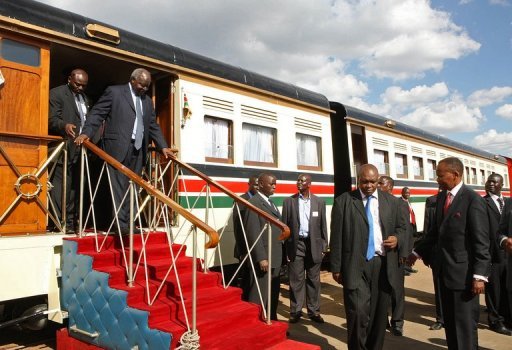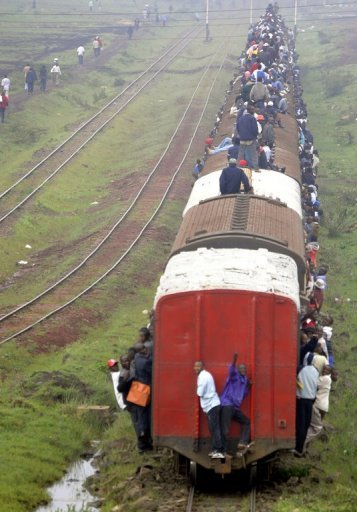
Kenyan commuters in the capital Nairobi travelled Wednesday on the inaugural commercial service of a new train system aimed at easing some of the worst traffic jams in the world.
Travelling on refurbished locomotives and carriages from the newly opened Syokimau station — some 16 kilometres (ten miles) from Nairobi city centre — passengers cut their travel time by more than two-thirds.
“The reliability, convenience and ease in movement are worth every shilling,” said businesswoman Jessica Mwangangi, one of the first commercial travellers on the train, which follows a colonial-era line previously used mainly for heavy goods traffic.
“From now on, I will be using my car only over the weekends,” she added.
The sleek and modern Syokimau station — with electronic ticketing systems and vast car parking areas — is the first of 28 stations to be built planned to ease traffic in the capital.
“It will ease congestion on roads, minimize carbon emissions as well as provide safe, reliable and affordable transport,” Kenya Railways Corporation chief Nduva Muli said at station’s formal opening on Tuesday.
The station, the first to be built in Kenya for 80 years, and the first as an independent nation, was built at a cost of some 4.6 million dollars.
 However, the project is far behind schedule, and it is not clear when the network of other stations will be completed, and until then the train service’s impact remains limited to the one suburb with a station.
However, the project is far behind schedule, and it is not clear when the network of other stations will be completed, and until then the train service’s impact remains limited to the one suburb with a station.
Travelling from the middle class suburb of Syokimau to the city centre on average takes around an hour and a half by road, but often up to three hours in peak rush hour, or if roads are flooded in regular torrential rainstorms.
The half-hour service is scheduled to make five round trips a day, each potentially carrying a maximum of up to 11,000 passengers on every journey.
Nairobi was ranked the world’s fourth worst city for traffic by a 2011 survey commissioned by IBM, beating only New Delhi, New York, London and Los Angeles.
However, amidst the excitement of the new service, some expressed doubts at the overall impact, noting its relatively high cost for a ticket meant it appealed only to middle class commuters.
“Many people have bigger problems, such as saving their meagre incomes, other than worry over time spent in traffic,” said Job Otieno, another passenger, who only took the train because services were free of charge on the first day.
“Tomorrow I will take the bus. The costs are too high for me,” he said.
A round trip ticket costs 200 shillings (2.35 dollars), while many casual labourers earn as little as 150 shillings (1.75 dollars) a day.
